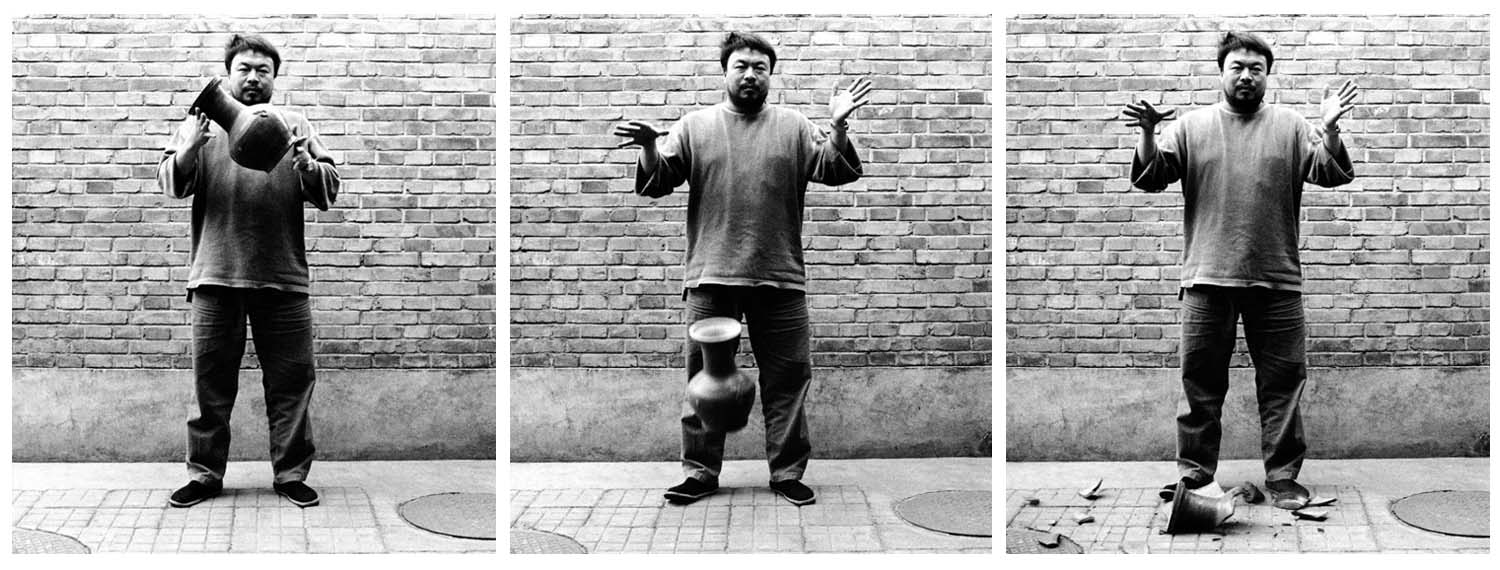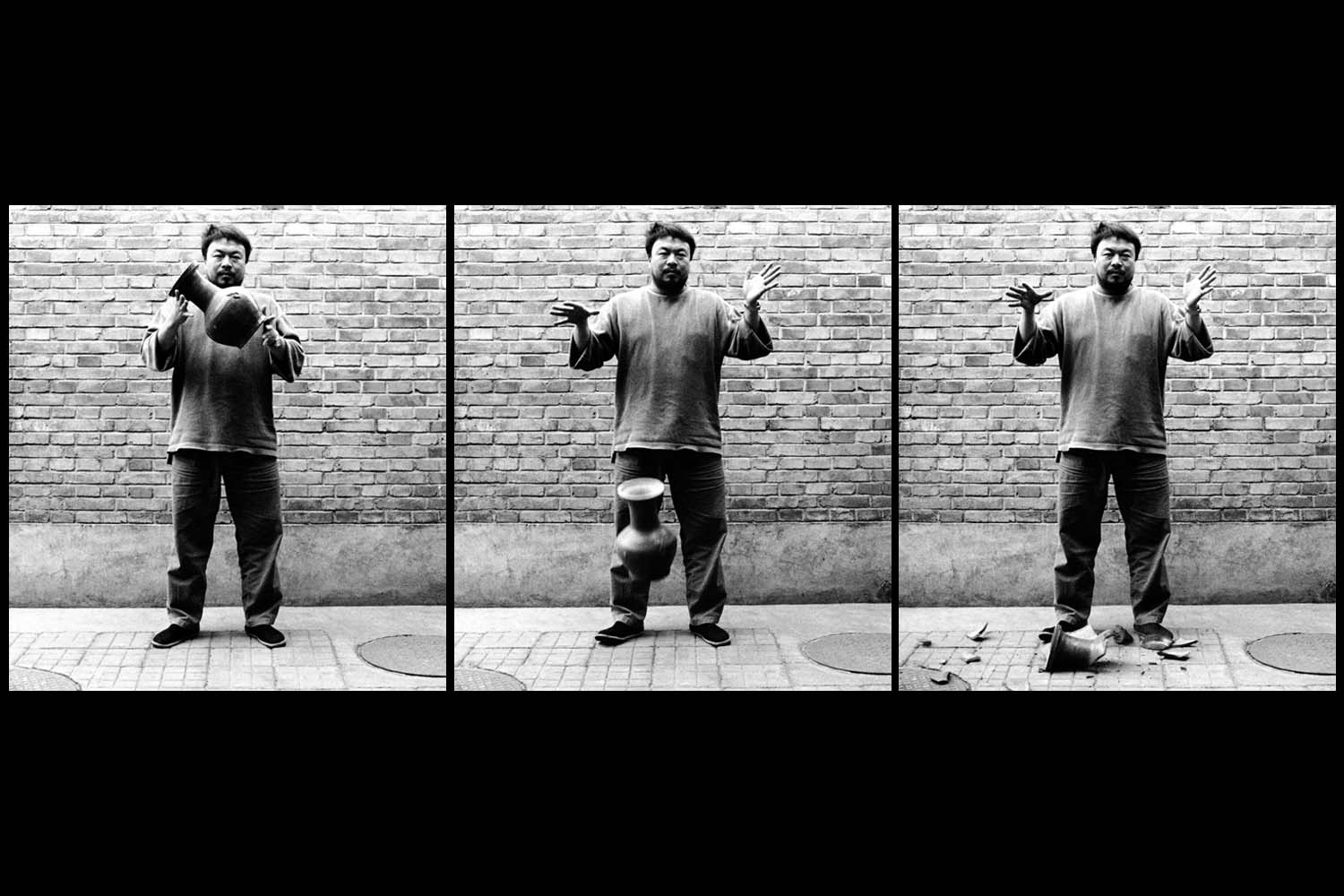
Ai Weiwei, who has been the subject of many news headlines as of late, has extended his attention beyond the art world—addressing the reality of China’s social problems and shedding light on the corruption within the Chinese government. Ai utilizes art to voice political dissidence and poses questions to the authority. The result of integrating his social activism elevates his art practice to a more universal forum and forces viewers to consider the problems of the real world beyond his work.
Ai works across many mediums, including sculpture, performance, and photography—perhaps as a device to reach a larger audience—thus, garnering activism throughout the art world.
Study of Perspective is a series of images, shot from 1995 to 2003, showing the artist flipping the middle finger against different places across the globe—many of which are iconic landmarks of their respective countries. The gesture, captured utilizing a snapshot aesthetic, confronts its viewer with a universal and concise statement of political opposition.
His photography, in particular, has taken form not only within the confines of a museum, but also on his Twitpic account, where he captured images of himself in the hospital while recovering from brain surgery to correct a cerebral hemorrhage in September 2009. The hemorrhage believed to be the result of a brutal police beating in August of the same year. The images act to document the extent in which the Chinese government will take to eliminate dissidents.
Most recently, Ai was detained by the Chinese governent for “economic crimes” and has yet to be released. This detention follows an incident earlier this year in January, in which Ai’s studio was demolished by order of the Chinese government.
For more news on the artist read the latest story on TIME’s Global Spin.

More Must-Reads From TIME
- The 100 Most Influential People of 2024
- The Revolution of Yulia Navalnaya
- 6 Compliments That Land Every Time
- What's the Deal With the Bitcoin Halving?
- If You're Dating Right Now , You're Brave: Column
- The AI That Could Heal a Divided Internet
- Fallout Is a Brilliant Model for the Future of Video Game Adaptations
- Want Weekly Recs on What to Watch, Read, and More? Sign Up for Worth Your Time
Contact us at letters@time.com